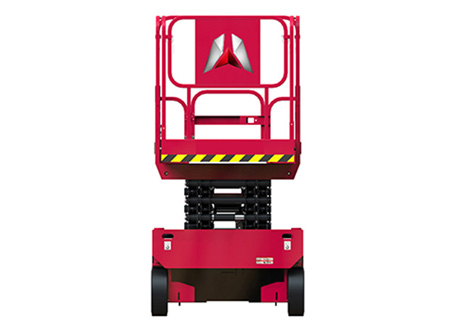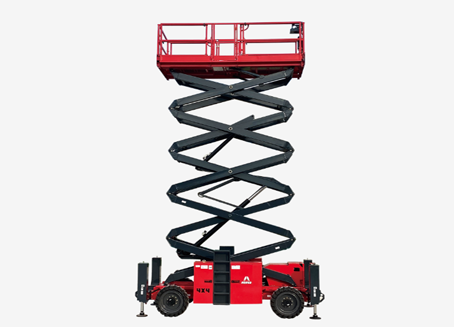Electric or Rough Terrain Scissor Lifts : What's the Difference?
Scissor lifts offer operators the opportunity to increase their speed and safety when working in a variety of environments. Often, they are able to handle heavier workloads and provide operators with a more powerful working platform than other aerial work equipment on the market today. Once you have determined that a scissor lift is what you are looking for, you will need to conduct a more in-depth assessment of your needs to find the most suitable classification.
Not all scissor lifts are created equal, so we want to make sure you make the right decision.
Electric scissor lifts
Electric scissor lifts are ideal for commercial and industrial work environments, bringing safety and convenience to warehouses, retail shops, production facilities, and more. Compared to other aerial work platforms, electric scissor lifts are quieter, have zero emissions, and are less reliant on hydraulic fluid. They also have the option of non-marking tires. Electric scissor lifts are the clear choice for indoor operation.
The compact design of electric scissor lifts facilitates movement in narrow aisles and allows passage through small doorways, while still providing the vertical reach required for a variety of tasks. Safety features (such as safety wrap-around railings) and the versatility of the application make electric scissor lifts a natural alternative to traditional ladders or scaffolding for many workplace tasks. Whether carrying out sign repairs, changing light bulbs, working in loading bays or accessing high storage racks in warehouse spaces, electric scissor lifts can get the job done with reliability and ease of handling, which can only increase productivity on the job site.
Rough Terrain Scissor Lifts
Rough terrain scissor lifts are useful in many applications, mainly in outdoor locations where the ground is uneven or sloping. Before hiring equipment, you need to know the land you are farming and know how steep the slope is. Rough terrain scissor lifts use a measurement called climbing capacity. Climbing capacity is the steepest slope the machine can climb as opposed to the operating angle, which is the steepest slope the machine will operate on. In the field of access, climbing capacity specifically refers to the amount of slope a machine can climb up or down
Rough terrain scissor lifts offer many of the same features as electric scissor lifts. Combining gas and diesel engines, rugged terrain scissor lifts tend to be more construction oriented than electric lifts. However, they can be a little noisier than electric models, as these larger engines are designed for increased productivity in outdoor workplaces.
They tend to have larger working platforms, higher load-bearing capacity, and greater vertical reach. Both four-wheel drive and all-wheel drive are available to find scissor lifts for rough terrain, making getting around job sites full of obstacles a breeze. Some also come with optional outriggers to add base stability when the lift is extended. Rough terrain scissor lifts have a much greater workload capacity; starting at the high end of the electric lift capacity range, they can lift around 1,000 to 2,250 lbs depending on the model, with some reaching heights of up to 60 feet. If you are looking for a mobile aerial platform that is not only robust but also offers optimum stability, workspace, and optimal load capacity, then a scissor lift for rugged terrain may be the right choice for you.
For assistance in finding the right the scissor lift for your next project or to purchase a new lift contact our team.






